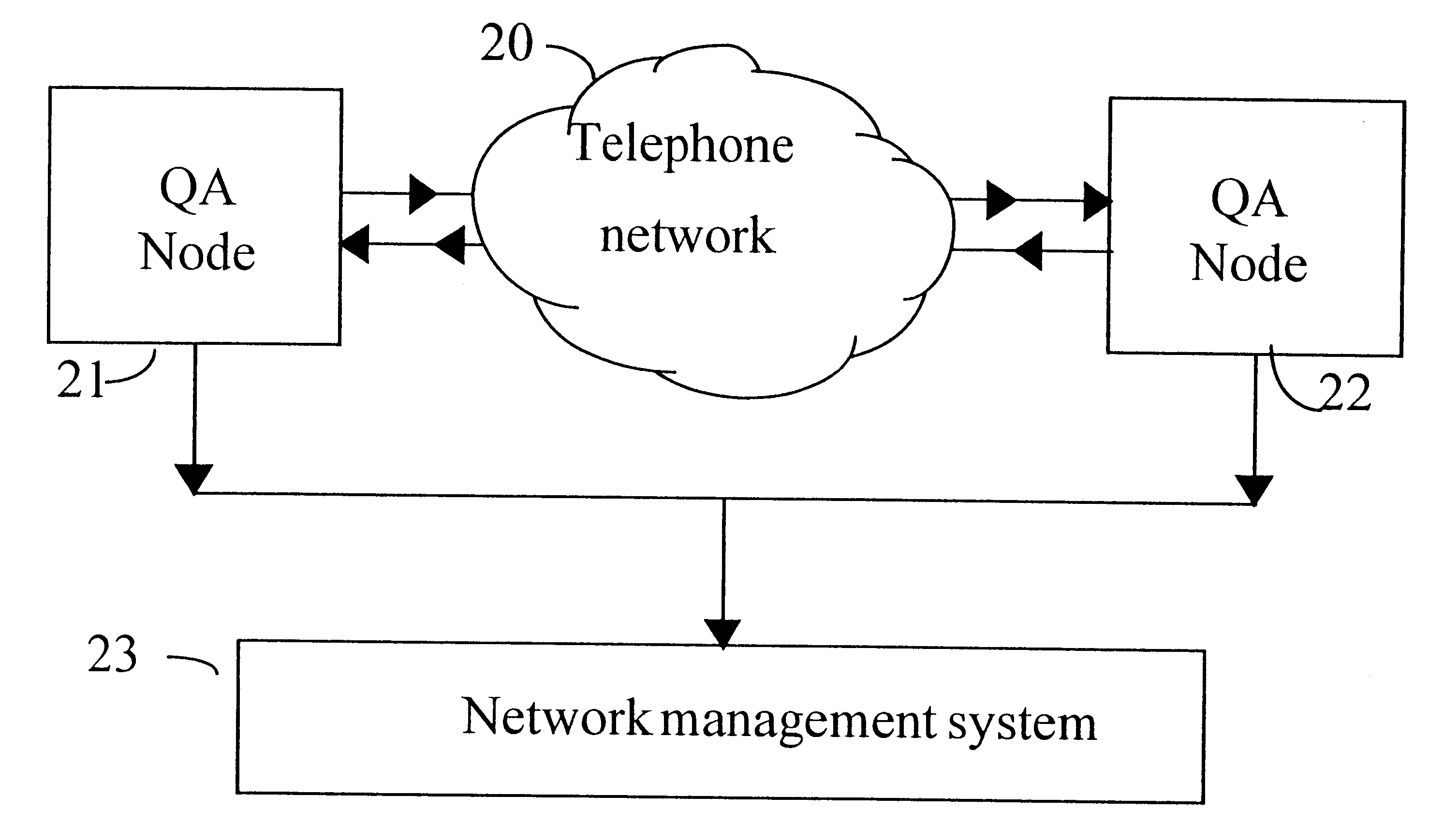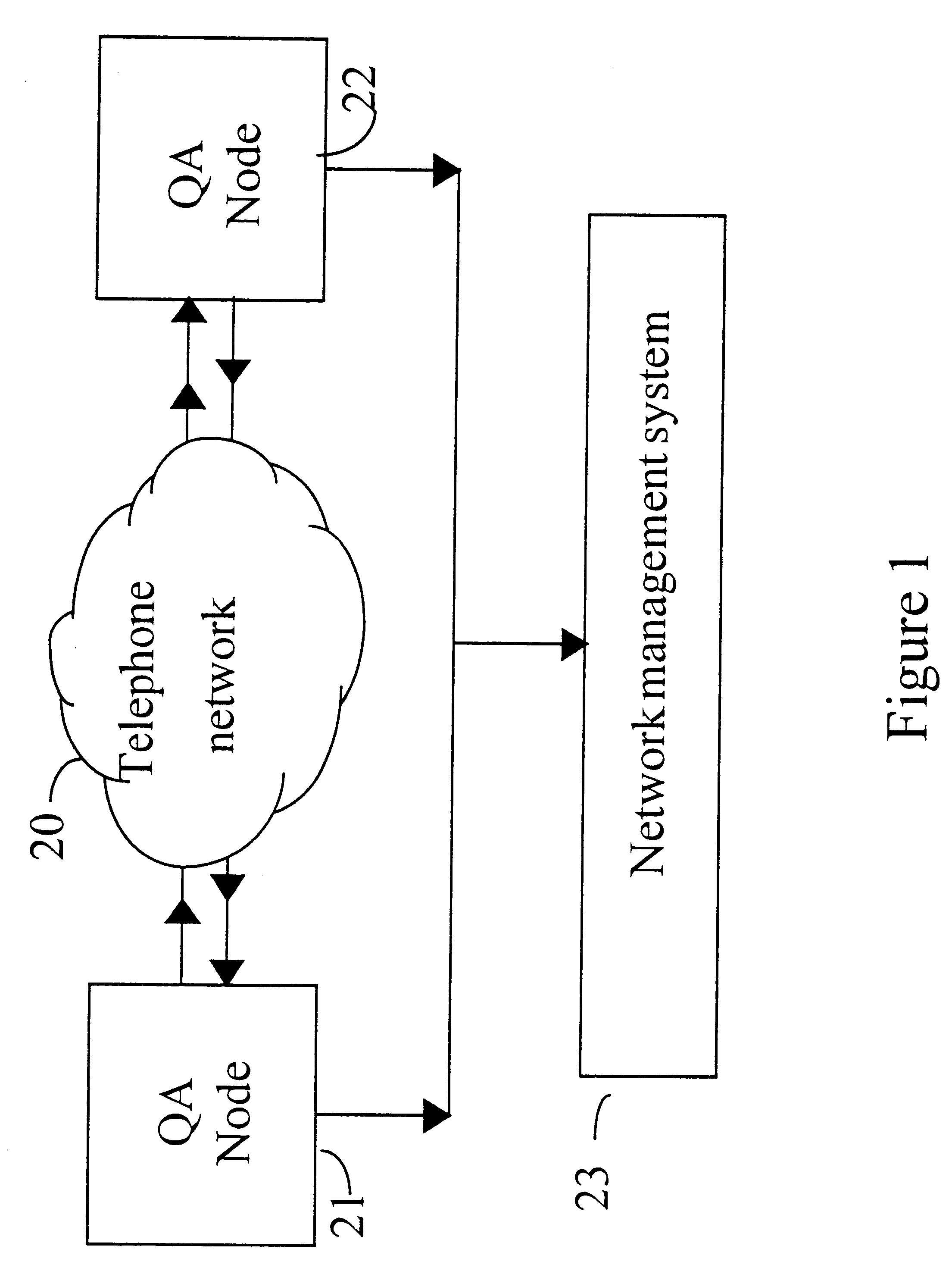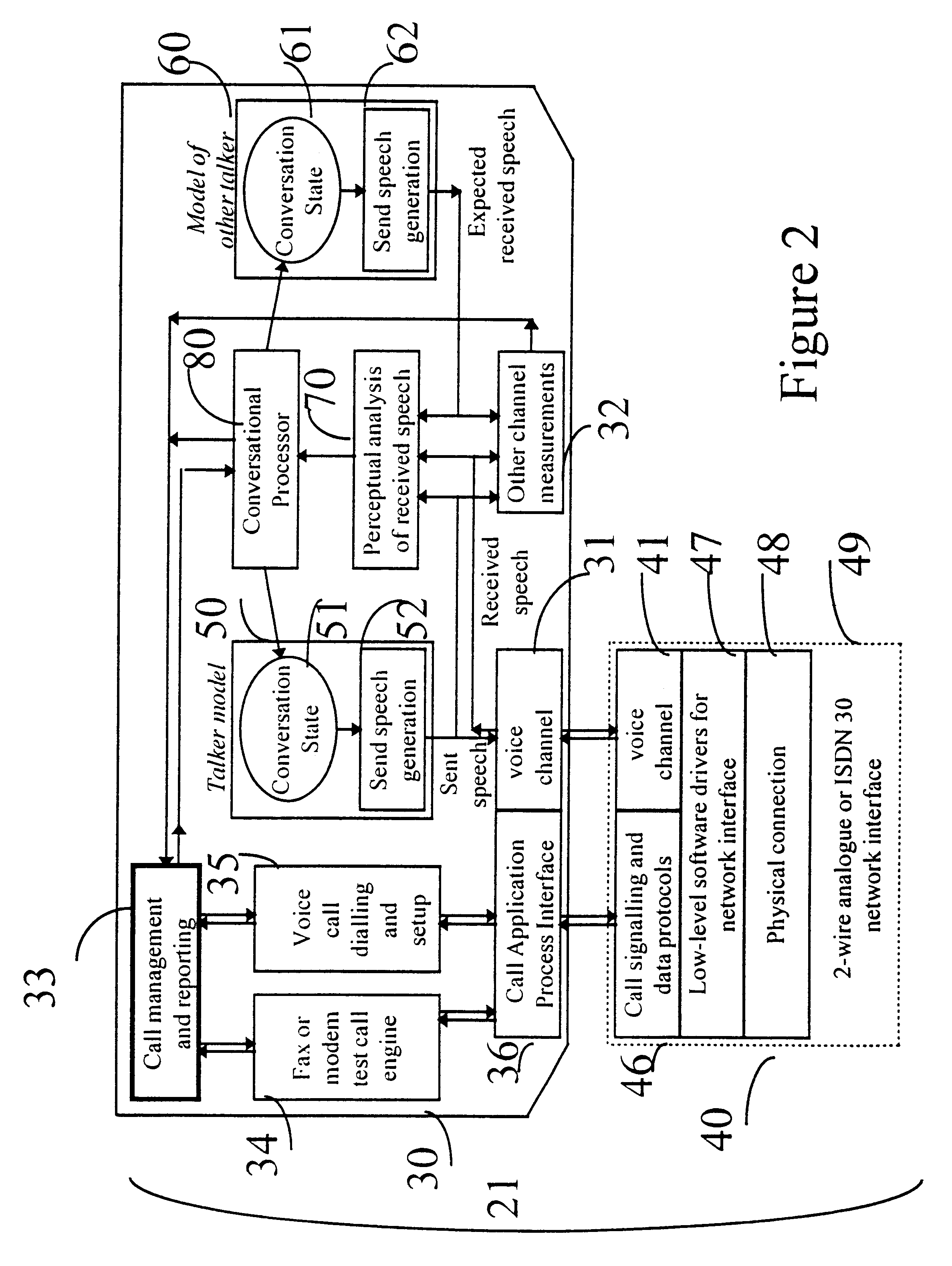Testing telecommunications equipment
a technology for telecommunication equipment and quality assessment, applied in the direction of substation equipment, electrical equipment, surveillance/monitoring/testing arrangements, etc., can solve the problems of affecting the application of telecommunications equipment in the live telephone network, affecting the quality of communication systems, and exhibiting far more complex effects of modern networks
- Summary
- Abstract
- Description
- Claims
- Application Information
AI Technical Summary
Benefits of technology
Problems solved by technology
Method used
Image
Examples
Embodiment Construction
An outline structure for a quality assessment (QA) system with two devices is shown in FIG. 1. As shown in FIG. 1, at each termination 21, 22 of the network 20 under test there is located a measurement device or tester. One device (the `originator`) 21 sets up calls as appropriate and initiates a conversation with one or more receiving devices (`destinations`) 22 (only one shown); assessment of an audioconference link would require one such device for each party to the call. Once conversation is initiated all devices 21, 22 etc behave in a similar way.
During the call the devices 21, 22 communicate through the network 20 using speech-like signals. The signals sent by each device are governed by a model of the conversation, which determines what is `spoken` based on what has been received and an underlying state encoding the desired content (`conversational intent`) of the call. Quality assessment is performed by at least one device, and preferably by all of them, based on the incomin...
PUM
 Login to View More
Login to View More Abstract
Description
Claims
Application Information
 Login to View More
Login to View More - R&D
- Intellectual Property
- Life Sciences
- Materials
- Tech Scout
- Unparalleled Data Quality
- Higher Quality Content
- 60% Fewer Hallucinations
Browse by: Latest US Patents, China's latest patents, Technical Efficacy Thesaurus, Application Domain, Technology Topic, Popular Technical Reports.
© 2025 PatSnap. All rights reserved.Legal|Privacy policy|Modern Slavery Act Transparency Statement|Sitemap|About US| Contact US: help@patsnap.com



